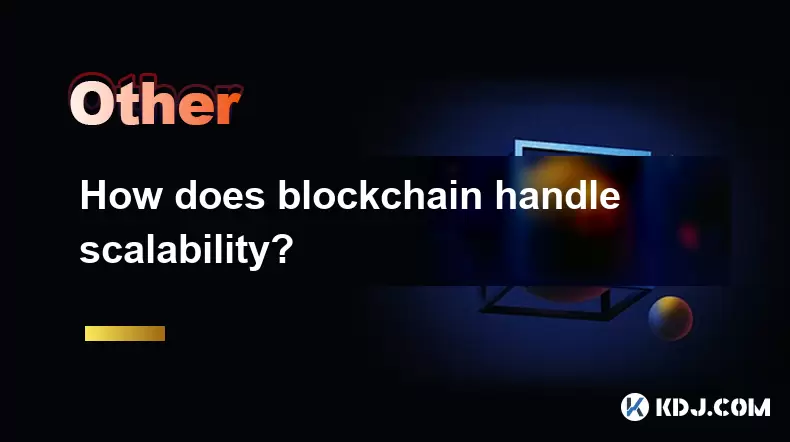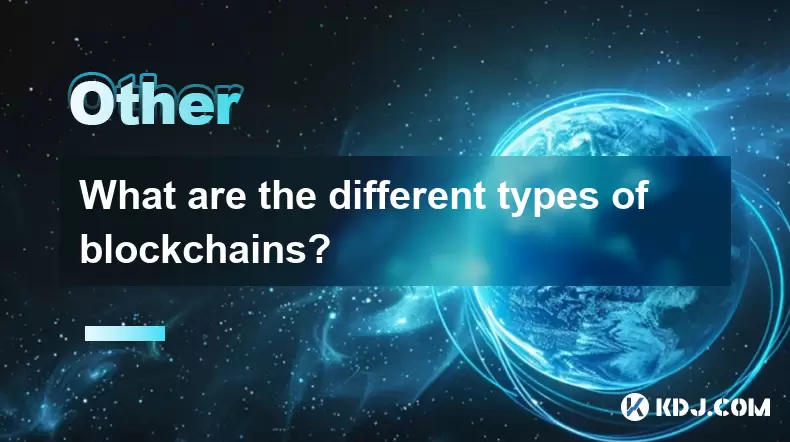-
 Bitcoin
Bitcoin $112400
-1.07% -
 Ethereum
Ethereum $3409
-3.27% -
 XRP
XRP $2.784
-6.60% -
 Tether USDt
Tether USDt $0.9997
-0.03% -
 BNB
BNB $739.3
-2.09% -
 Solana
Solana $158.0
-2.90% -
 USDC
USDC $0.9998
-0.02% -
 TRON
TRON $0.3213
-0.94% -
 Dogecoin
Dogecoin $0.1929
-5.01% -
 Cardano
Cardano $0.6974
-2.82% -
 Hyperliquid
Hyperliquid $36.69
-2.31% -
 Sui
Sui $3.327
-4.80% -
 Stellar
Stellar $0.3672
-5.18% -
 Chainlink
Chainlink $15.65
-3.07% -
 Bitcoin Cash
Bitcoin Cash $525.0
-1.68% -
 Hedera
Hedera $0.2291
-6.00% -
 Avalanche
Avalanche $20.91
-2.96% -
 Ethena USDe
Ethena USDe $1.000
0.00% -
 Toncoin
Toncoin $3.520
-1.12% -
 UNUS SED LEO
UNUS SED LEO $8.968
0.14% -
 Litecoin
Litecoin $105.7
0.26% -
 Shiba Inu
Shiba Inu $0.00001181
-1.79% -
 Polkadot
Polkadot $3.492
-2.08% -
 Uniswap
Uniswap $8.800
-3.10% -
 Dai
Dai $0.9999
-0.01% -
 Monero
Monero $289.9
-3.17% -
 Bitget Token
Bitget Token $4.243
-1.27% -
 Pepe
Pepe $0.00001006
-3.67% -
 Cronos
Cronos $0.1248
-5.68% -
 Aave
Aave $249.7
-2.50%
What is a block in a blockchain? How are blocks linked to each other?
A block in a blockchain contains transactional data, a header with metadata, and a nonce; miners verify and add these blocks, ensuring the chain's integrity and security.
Apr 27, 2025 at 01:21 pm

A block in a blockchain is a fundamental component that serves as a container for transactional data and other relevant information. Each block is crucial in maintaining the integrity and security of the entire blockchain network. Understanding the structure and function of a block is essential for anyone interested in the workings of blockchain technology.
What is a Block in a Blockchain?
A block is essentially a record of transactions that have occurred within a specific timeframe on the blockchain. Each block contains several key elements:
- Header: The header of a block contains metadata about the block itself. This includes the block's version, the timestamp of when the block was created, the hash of the previous block, and the Merkle root, which is a hash of all the transactions in the block.
- Transaction Data: This section contains the list of transactions that are being recorded in the block. Each transaction includes details such as the sender, recipient, and the amount of cryptocurrency being transferred.
- Nonce: A nonce is a random number used in the mining process to find a hash that meets the difficulty criteria of the blockchain network.
How are Blocks Linked to Each Other?
Blocks in a blockchain are linked to each other through a process known as hashing. This linking mechanism is what gives blockchain its name and ensures the security and immutability of the data stored within it.
- Hash of the Previous Block: Each block contains the hash of the previous block in its header. This creates a chain of blocks where each block is connected to the one before it. If any data in a block is altered, the hash of that block changes, which in turn affects all subsequent blocks in the chain.
- Merkle Root: The Merkle root is a hash of all the transactions in the block. It is used to efficiently verify the integrity of the transactions within the block. By including the Merkle root in the block header, the blockchain ensures that any change to a transaction would require recalculating the Merkle root and the block's hash, making unauthorized alterations extremely difficult.
The Role of Miners in Creating Blocks
Miners play a crucial role in the creation of blocks. They use powerful computers to solve complex mathematical problems, a process known as proof of work. Once a miner successfully solves the problem, they are allowed to add a new block to the blockchain.
- Verification of Transactions: Before adding a block, miners verify the transactions included in the block to ensure they are valid and follow the rules of the blockchain network.
- Adding the Block: Once the transactions are verified, the miner adds the block to the blockchain. The block includes the hash of the previous block, ensuring the continuity of the chain.
- Reward: Miners are rewarded with cryptocurrency for their efforts in adding a new block to the blockchain. This reward serves as an incentive for miners to continue securing the network.
The Importance of Block Size and Block Time
The size of a block and the time it takes to create a new block are important factors in the efficiency and scalability of a blockchain.
- Block Size: The size of a block determines how many transactions can be included in it. Larger block sizes can lead to higher transaction throughput but may also increase the time and resources required to validate and add the block to the blockchain.
- Block Time: Block time refers to the average time it takes to create a new block. Shorter block times can lead to faster transaction confirmations but may also increase the risk of network congestion and forks.
The Impact of Block Difficulty on the Blockchain
The difficulty of creating a new block is adjusted periodically to maintain a consistent block time. This difficulty adjustment is crucial for the stability and security of the blockchain.
- Difficulty Adjustment: The difficulty of the mathematical problem that miners need to solve is adjusted based on the total computational power of the network. If the network's power increases, the difficulty is increased to maintain the target block time.
- Security: Higher difficulty levels make it more challenging for malicious actors to launch a 51% attack, where they attempt to control the majority of the network's mining power to alter the blockchain.
Frequently Asked Questions
Q: Can a block be removed from the blockchain?
A: Once a block is added to the blockchain, it is extremely difficult to remove or alter it due to the cryptographic linking of blocks. Any attempt to change a block would require recalculating the hashes of all subsequent blocks, which is computationally infeasible on a secure blockchain.
Q: How does the blockchain handle conflicting transactions within a block?
A: The blockchain uses a consensus mechanism to resolve conflicting transactions. If two transactions attempt to spend the same funds, the first transaction to be included in a block and confirmed by the network is considered valid. The conflicting transaction is rejected.
Q: What happens if two miners find a valid block at the same time?
A: In the event of a tie, where two miners find a valid block simultaneously, the blockchain may temporarily fork. The network will eventually resolve this by choosing the chain with the most cumulative proof of work. The shorter chain is then abandoned, and its blocks are considered orphaned.
Disclaimer:info@kdj.com
The information provided is not trading advice. kdj.com does not assume any responsibility for any investments made based on the information provided in this article. Cryptocurrencies are highly volatile and it is highly recommended that you invest with caution after thorough research!
If you believe that the content used on this website infringes your copyright, please contact us immediately (info@kdj.com) and we will delete it promptly.
- Crypto, Phishing, and Your Wallet: A New Yorker's Guide to Staying Safe
- 2025-08-03 10:30:16
- Troller Cat Meme Coin Presale Soars: A New King in the Crypto Jungle?
- 2025-08-03 10:30:16
- Grayscale, Altcoin Trust, and Mid-Cap Mania: What's the Deal?
- 2025-08-03 08:50:16
- XRP, ADA, and the Altcoin Evolution: What's Hot and What's Next
- 2025-08-03 08:30:16
- Altcoins, Bitcoin, and Inflows: Decoding the Crypto Current
- 2025-08-03 09:30:16
- HBAR Price Check: Will Monthly Gains Hold at This Resistance Level?
- 2025-08-03 08:30:16
Related knowledge

What is the difference between on-chain and off-chain transactions?
Aug 02,2025 at 04:22pm
Understanding On-Chain TransactionsOn-chain transactions refer to digital asset transfers that are recorded directly on a blockchain ledger. These tra...

What is the double-spending problem and how does blockchain prevent it?
Aug 02,2025 at 01:07pm
Understanding the Double-Spending ProblemThe double-spending problem is a fundamental challenge in digital currency systems where the same digital tok...

What is the difference between a blockchain and a database?
Aug 01,2025 at 09:36pm
Understanding the Core Structure of a BlockchainA blockchain is a decentralized digital ledger that records data in a series of immutable blocks linke...

How does blockchain handle scalability?
Aug 02,2025 at 02:58pm
Understanding Blockchain Scalability ChallengesBlockchain scalability refers to a network's ability to handle an increasing volume of transactions wit...

What are the different types of blockchains?
Aug 03,2025 at 03:01am
Public Blockchains: Open and Decentralized NetworksPublic blockchains are the most widely recognized type of blockchain, characterized by their open a...

What is a hash in a blockchain?
Aug 02,2025 at 05:28am
Understanding the Concept of Hash in BlockchainA hash in the context of blockchain technology refers to a unique digital fingerprint generated by a cr...

What is the difference between on-chain and off-chain transactions?
Aug 02,2025 at 04:22pm
Understanding On-Chain TransactionsOn-chain transactions refer to digital asset transfers that are recorded directly on a blockchain ledger. These tra...

What is the double-spending problem and how does blockchain prevent it?
Aug 02,2025 at 01:07pm
Understanding the Double-Spending ProblemThe double-spending problem is a fundamental challenge in digital currency systems where the same digital tok...

What is the difference between a blockchain and a database?
Aug 01,2025 at 09:36pm
Understanding the Core Structure of a BlockchainA blockchain is a decentralized digital ledger that records data in a series of immutable blocks linke...

How does blockchain handle scalability?
Aug 02,2025 at 02:58pm
Understanding Blockchain Scalability ChallengesBlockchain scalability refers to a network's ability to handle an increasing volume of transactions wit...

What are the different types of blockchains?
Aug 03,2025 at 03:01am
Public Blockchains: Open and Decentralized NetworksPublic blockchains are the most widely recognized type of blockchain, characterized by their open a...

What is a hash in a blockchain?
Aug 02,2025 at 05:28am
Understanding the Concept of Hash in BlockchainA hash in the context of blockchain technology refers to a unique digital fingerprint generated by a cr...
See all articles

























































































